 September
24
September
24
Tags
Gay Georgian London: Horace Walpole Amongst the ‘Finger-Twirlers’
 On the 24th of September 1717, Horatio Walpole, 4th Earl of Orford, art historian, man of letters, antiquarian and Whig politician, was born in London. Although the son of the first Prime Minister, Sir Robert Walpole, he is largely remembered in our times for Strawberry Hill, the home he built in Twickenham, south-west London, where he revived the Gothic style some decades before his Victorian successors, a magical castle which was designed not only as an exercise in public relations, but as a large ‘closet’ to which Horace Walpole could sometimes retire when he wished to express his true persona with intimate friends. Walpole is also famous for his Gothic novel, The Castle of Otranto. Along with the book, his literary reputation rests on his Letters, which are of significant social and political interest. In one of these correspondences of the 24th January 1740, Walpole wrote of the quirkiness of English life as compared to that of other European nations:
On the 24th of September 1717, Horatio Walpole, 4th Earl of Orford, art historian, man of letters, antiquarian and Whig politician, was born in London. Although the son of the first Prime Minister, Sir Robert Walpole, he is largely remembered in our times for Strawberry Hill, the home he built in Twickenham, south-west London, where he revived the Gothic style some decades before his Victorian successors, a magical castle which was designed not only as an exercise in public relations, but as a large ‘closet’ to which Horace Walpole could sometimes retire when he wished to express his true persona with intimate friends. Walpole is also famous for his Gothic novel, The Castle of Otranto. Along with the book, his literary reputation rests on his Letters, which are of significant social and political interest. In one of these correspondences of the 24th January 1740, Walpole wrote of the quirkiness of English life as compared to that of other European nations:
“The farther I travel, the less I wonder at anything: a few days reconcile one to a new spot, or an unseen custom; and men are so much the same everywhere, that one scarce perceives any change of situation. The same weaknesses, the same passions that in England plunge men into elections, drinking, whoring, exist here, and show themselves in the shapes of Jesuits, cicisbeos, and Corydon ardebat Alexin’s [Virgil, Ecl. Ii 105]. The most remarkable thing I have observed since I came abroad, is, that there are no people so obviously mad as the English. The French, the Italians, have great follies, great faults; but then they are so national, that they cease to be striking. In England, tempers vary so excessively, that almost every one’s faults are peculiar to himself. I take this diversity to proceed partly from our climate, partly from our government: the first is changeable, and makes us queer; the latter permits our queernesses to operate as they please. If one could avoid contracting this queerness, it must certainly be the most entertaining to live in England, where such a variety of incidents continually amuse. The incidents of a week in London would furnish all Italy with news for a twelvemonth.” (Horace Walpole to Richard West, Florence, 24 January 1740, in Horace Walpole’s Correspondence with Thomas Gray, Richard West, and Thomas Ashton, ed. W. S. Lewis, George L. Lam, and Charles H. Bennett).
 It is thought that a strong revival in gender relations occurred in London around 1700 that gave birth to a sexual system that lasted in many ways until the sexual revolution of the 1960s. Three distinctive genders seem to have emerged from this revolution: men, women and a third gender of adult effeminate men, often believed to have homosexual tendencies. The world of 18th-century London was rife with prostitution, illegitimacy, sexual violence and adultery. The complex sexual underworld of extramarital behaviour was key not only to the sexual lives of men and women, but to the very existence of marriage, the family, domesticity and romantic love. “Randolph Trumbach was the first historian to argue that there was a thriving, gay male subculture in 18th-century London. The public life of this subculture revolved around certain coffee-houses or alehouses that catered to so-called “sodomites.” These molly-houses, as they came to be known, provided a protected environment where men could drink, dance, and have sex with one another. While an established molly-house such as Mother Clap’s served as many as forty men on any given night and provided a back room for more illicit activities, a molly-house could be as informal as someone’s private room in an otherwise “straight” public house.” (Amanda Bailey ‘Welcome to the Molly-House: An Interview with Randolph Trumbach’, Cabinet Magazine, Issue 8 Pharmacopia Fall 2002).
It is thought that a strong revival in gender relations occurred in London around 1700 that gave birth to a sexual system that lasted in many ways until the sexual revolution of the 1960s. Three distinctive genders seem to have emerged from this revolution: men, women and a third gender of adult effeminate men, often believed to have homosexual tendencies. The world of 18th-century London was rife with prostitution, illegitimacy, sexual violence and adultery. The complex sexual underworld of extramarital behaviour was key not only to the sexual lives of men and women, but to the very existence of marriage, the family, domesticity and romantic love. “Randolph Trumbach was the first historian to argue that there was a thriving, gay male subculture in 18th-century London. The public life of this subculture revolved around certain coffee-houses or alehouses that catered to so-called “sodomites.” These molly-houses, as they came to be known, provided a protected environment where men could drink, dance, and have sex with one another. While an established molly-house such as Mother Clap’s served as many as forty men on any given night and provided a back room for more illicit activities, a molly-house could be as informal as someone’s private room in an otherwise “straight” public house.” (Amanda Bailey ‘Welcome to the Molly-House: An Interview with Randolph Trumbach’, Cabinet Magazine, Issue 8 Pharmacopia Fall 2002).
The “molly” referred to an effeminate male (in mannerisms, name and speech), with same sex interests – amongst others, these third sex identities prefigured the future ‘homosexual’ identity of our times. This social segment were a recognised, distinct subculture in Georgian England. It is recorded that as early as the 1700s marriage ceremonies between a Mollie and his male lover were enacted in these establishments to symbolise the couples’ partnership and commitment. Officially, though so-called ‘buggery’ was a capital offence at the time in England, under the Buggery Act 1533, and court records of such trials provide historians with substan tial evidence about molly houses. These occurrences were so frequent, that court records show how homosexuals were condemned to stand in the pillory once a week for years in the mid-18th century. Convictions for sodomy in London often ended in hangings at Tyburn.
tial evidence about molly houses. These occurrences were so frequent, that court records show how homosexuals were condemned to stand in the pillory once a week for years in the mid-18th century. Convictions for sodomy in London often ended in hangings at Tyburn.
Throughout history, numerous cultural chroniclers asked the question, discussed here by Amanda Vickery: “Was Walpole gay? Is Strawberry Hill the manifestation of a gay aesthetic? The questions linger, even though searching for something akin to a modern homosexual identity is fruitless. Homosexual acts were criminal – sodomy was a capital offence – but virile men were known to take lovers of both sexes, while effeminate manners were seen as a Frenchified heterosexual weakness. Walpole’s biographers have often considered him effeminate and asexual, or at most passively homosexual. (…) Walpole and his close male friends “did not identify themselves and were not identified by their contemporaries as sodomites, although several of them were known to feel desire for members of their own sex”. Walpole’s life-long correspondent, the Florentine expatriate Sir Horace Mann, was labelled a “finger-twirler” [a decent word for Sodomites] by the diarist and social commentator Hester Lynch Piozzi. A romantic and erotic camaraderie is detectable among the aesthetes, archly expressed in interior decoration and antiquarianism. Anachronistically, but plausibly, Haggerty sees a camp sensibility at work. Strawberry Hill was to be the playground of affectation, a stage set on which Walpole performed his life, and an irresistible resort for his special friends.” (Amanda Vickery, ‘Horace Walpole and Strawberry Hill’, The Guardian, Saturday 20 February 2010).
 Haggerty abstains from labelling Walpole or categorising his multifaceted personality: “Walpole is a rich, complex eighteenth-century figure. He does not fit into the neatly structured categories we have for defining sexual identity. Neither a sodomite nor a pederast, he does not fit into eighteenth-century categories, either. Is he then a “finger – twirler” in Piozzi’s terms? Perhaps, but what the letters reveal is a bitchy, playful, arrogant, self-satisfied, intriguing, acquisitive, loving, and devoted friend who loves deeply and long and devotes himself to his house and his collections with the same kind of energy he puts into friends and (sometimes) politics. This is the person who emerges so vividly and richly in the letters that he himself preserved for posterity.”(George E. Haggerty, ‘Queering Horace Walpole’, Studies in English Literature, 1500-1900, Vol. 46, No. 3, Restoration and EighteenthCentury, Summer, 2006).
Haggerty abstains from labelling Walpole or categorising his multifaceted personality: “Walpole is a rich, complex eighteenth-century figure. He does not fit into the neatly structured categories we have for defining sexual identity. Neither a sodomite nor a pederast, he does not fit into eighteenth-century categories, either. Is he then a “finger – twirler” in Piozzi’s terms? Perhaps, but what the letters reveal is a bitchy, playful, arrogant, self-satisfied, intriguing, acquisitive, loving, and devoted friend who loves deeply and long and devotes himself to his house and his collections with the same kind of energy he puts into friends and (sometimes) politics. This is the person who emerges so vividly and richly in the letters that he himself preserved for posterity.”(George E. Haggerty, ‘Queering Horace Walpole’, Studies in English Literature, 1500-1900, Vol. 46, No. 3, Restoration and EighteenthCentury, Summer, 2006).
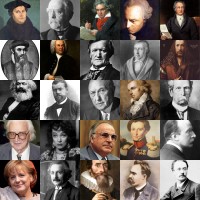


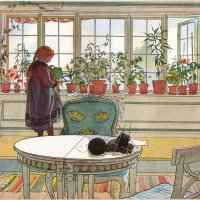
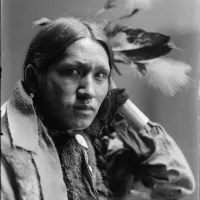
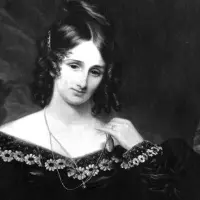
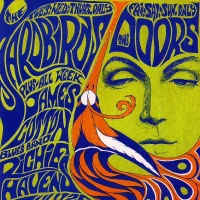
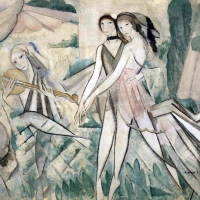

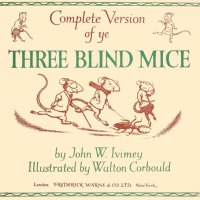
Presumably Mother Clap’s is the basis for the term ‘getting the clap’ for contracting a venereal disease. Interesting the distinction between Frenchified manners and sexual behaviour.
LikeLike
Yes, was just thinking the same 🙂 thanks for reading, Colin.
LikeLike
“There are no people so obviously mad as the English” hahaha, brilliant!
LikeLike